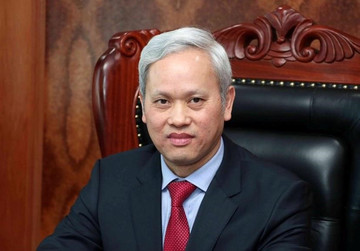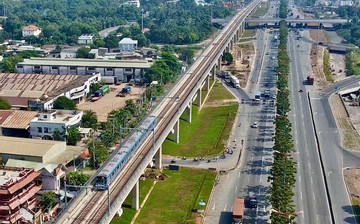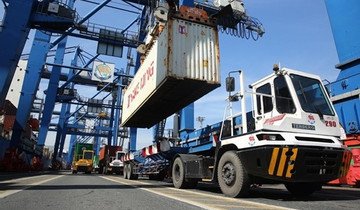- © Copyright of Vietnamnet Global.
- Tel: 024 3772 7988 Fax: (024) 37722734
- Email: evnn@vietnamnet.vn
vietnam economy
Update news vietnam economy
A difficult year ahead but there is room for economic growth
Although the economy was forecast to continue facing difficulties and challenges in 2023, there were silver linings to pin hope on, experts said.
Onwards and upwards for Vietnam’s production goals
In spite of a slowdown in industrial production, confidence among the business community is expected in increase, while being backed by the government’s sturdy efforts to provide enterprises a more business-friendly climate to play in.
Vietnam remains among top investment destinations globally: EuroCham
Despite the Business Climate Index (BCI) falling to 48.0 points in the fourth quarter of 2022, Vietnam remains among the top global investment locations, according to the European Chamber of Commerce in Vietnam (EuroCham).
Vietnam’s 2023 economic scenarios mapped out
The Central Institute for Economic Management (CIEM) under the Ministry of Planning and Investment has sketched out two scenarios for the Vietnamese economy in 2023.
Advantages outlined to push ahead with public investment
In the context that most capital mobilisation channels are tightening, public investment is considered an important driver for boosting economic growth.
Limited inflation pressures underpin positive projections
Vietnam has made a go of bringing inflation under control in 2022 thanks to the government’s great efforts to rein in market prices, with praise from various international organisations.
Potential for 6.6 percent GDP growth in 2023
With overall growth momentum likely to moderate further this year, UOB has kept its 2023 GDP growth forecast at 6.6 percent.
Standard Chartered forecasts 7.2% GDP growth for Vietnam in 2023
The Vietnamese economy will continue to expand vigorously in 2023 on the back of its strong recovery in the previous year, according to Standard Chartered.
The 'proud differences' set in 2022
Vietnam’s GDP grew by 8.02 percent in 2022, the sharpest growth rate since 2007. Meanwhile, the inflation rate was only 3.15 percent, a nice surprise if noting that pressure on inflation was low.
Vietnam’s economy increases by tenfold after 12 years
Vietnam’s economy totaled US$409 billion in 2022, or 10 times higher than that in 2000, according to the Government’s report released Tuesday.
WB Lead Country Economist: Vietnam has strong macro-economic performance in 2022
Vietnam has a strong macroeconomic performance in 2022. The economy grew by 8.02 percent in 2022. This is a remarkable result, particularly considering the economic slowdown experienced in the rest of the world.
Vietnam cannot develop without large private businesses: experts
According to the Ministry of Planning and Investment, the number of small private enterprises becoming medium scale and growing from medium to large scale in Vietnam is low.
An unforgettable post-Covid year
Later this week, socio-economic statistics will be officially released and are expected to be good, simply because the economic performance in the post-Covid year is better than 2021 when Vietnam was under lockdown.
ADB commends Viet Nam for maintaining stable macro-economic environment in 2022
The Asian Development Bank (ADB) commends Viet Nam for maintaining a stable macro-economic environment despite all of external shocks.
Vietnam among world's top 30 powerful countries: US News & World Report
Vietnam has been listed among the world's top 30 powerful countries in 2022 by US News & World Report.
FTAs continue to bolster trade in 2023 despite global uncertainties: Minister
Despite impact of geopolitical conflicts and rising inflationary risks in major economies around the world, Vietnam's economy was growing in 2022 thank to drastic measures and flexibility by the Government to the accelerate post-pandemic recovery.
China reopening will give Vietnam GDP 2%pts boost in 2023: Vinacapital economist
China’s reopening is expected to boost Vietnam’s GDP growth by over 2 percentage points next year, driven by the full resumption of Chinese tourist arrivals in the second half of 2023,
China reopening will boost Vietnam’s GDP by 2% pts in 2023: Vinacapital
China’s reopening is expected to boost Vietnam’s GDP growth by over 2 percentage points next year, driven by the full resumption of Chinese tourist arrivals in the second half of 2023.
Target of 6.5% economic growth for 2023 is a challenge: GSO leader
The target of 6.5% economic growth set by the National Assembly for next year, lower than the growth of 8.02% recorded in 2022, will be a challenge, said General Director of the General Statistics Office (GSO) Nguyen Thi Huong.
Vietnam’s GDP expands by 8,02% in 2022
Vietnam’s GDP growth reaches 8.02% this year, a record high in the 2011-2022 period as the economy is recovering strongly, General Director of the General Statistics Office (GSO) Nguyen Thi Huong told a press conference in Hanoi on December 29.



















